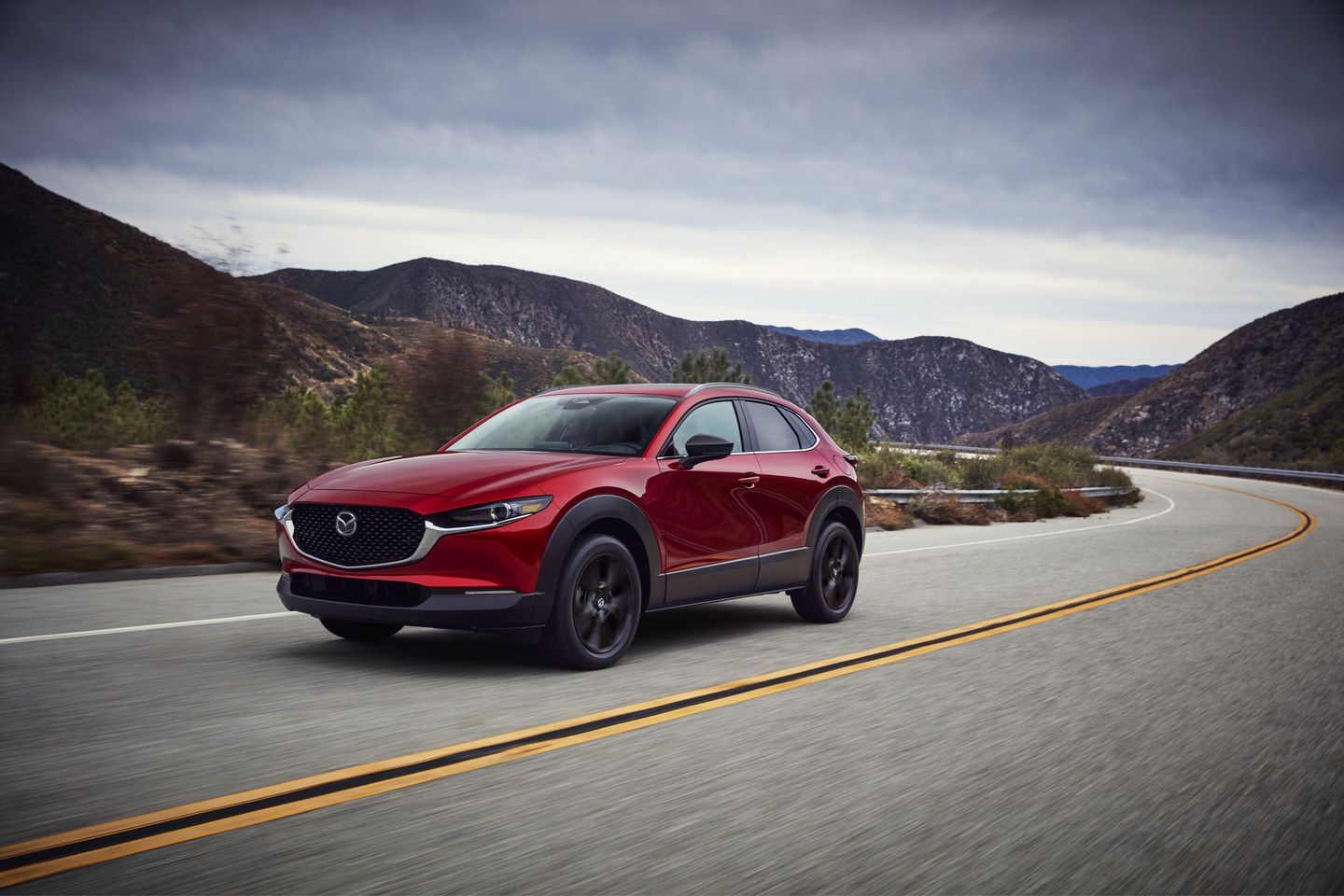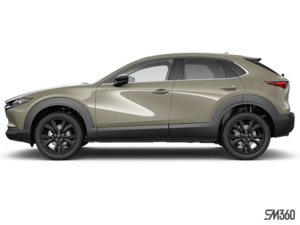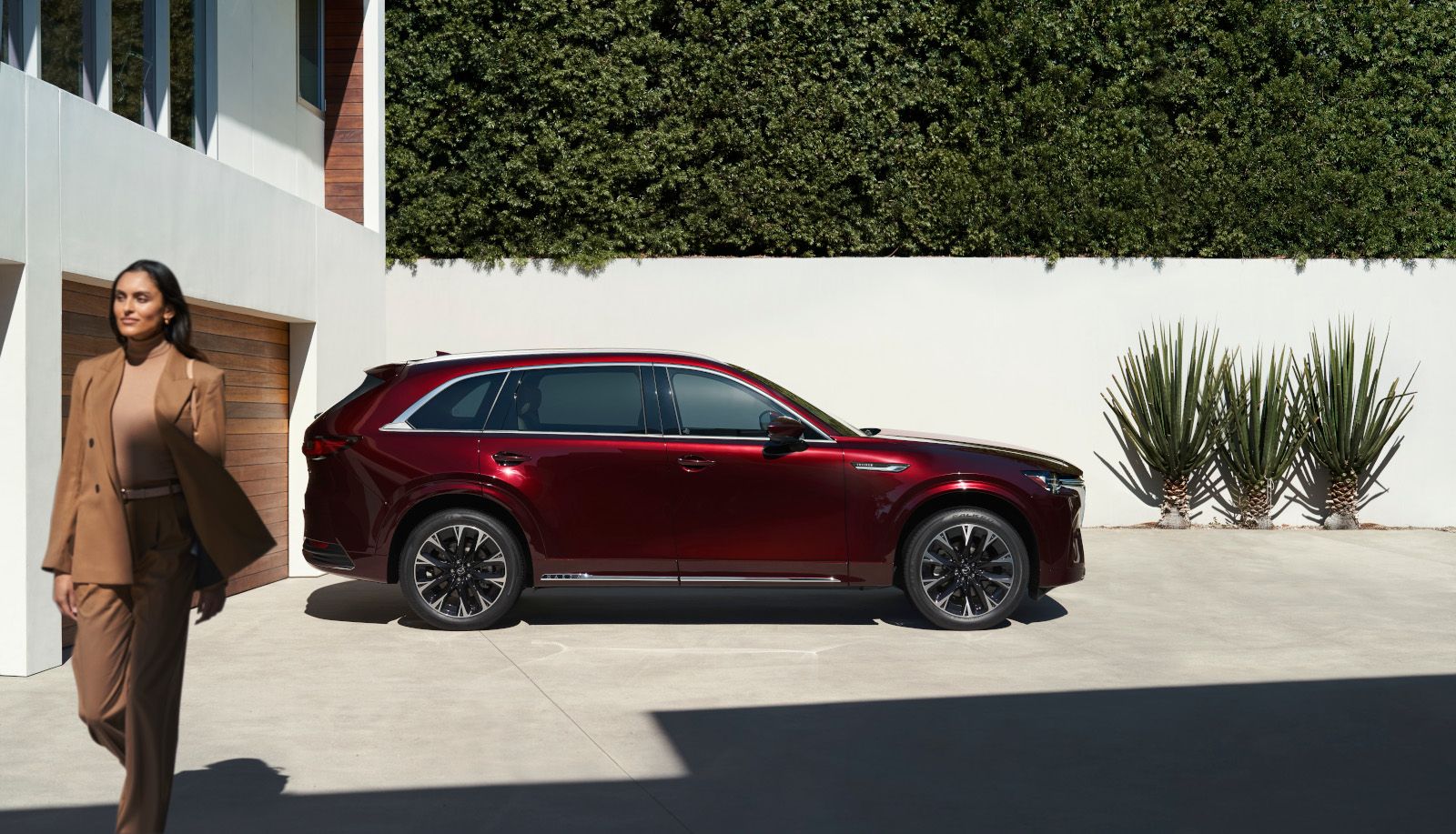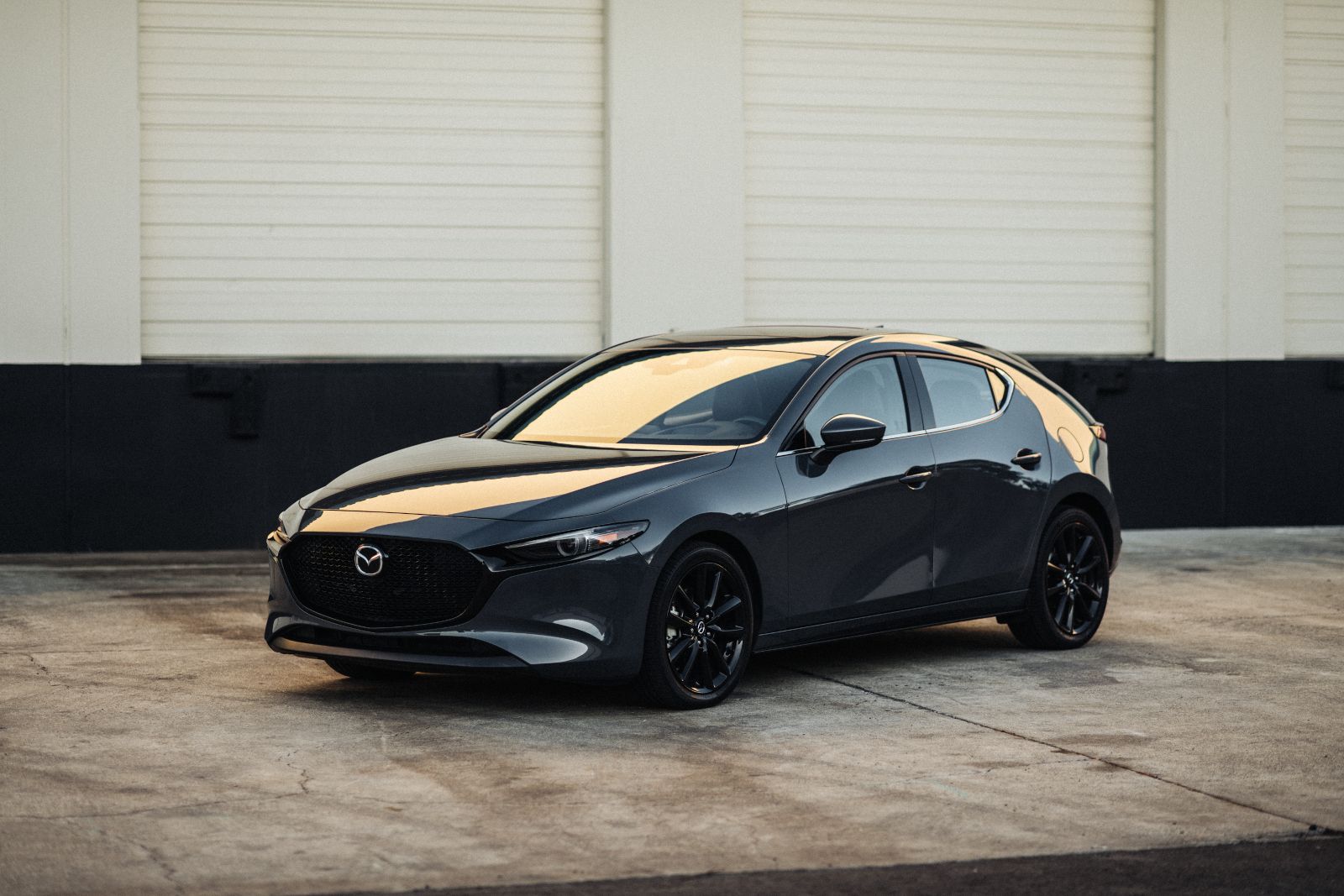Three Reasons the CX-30 Works Better Than a Sedan for Burnaby's Urban-Suburban Mix
October 08 2025,

Burnaby presents driving challenges that don't fit neatly into either pure urban or suburban categories. One moment you're navigating tight Metrotown parking structures, the next you're climbing residential hills near Burnaby Mountain, and within minutes you're merging onto Highway 1 toward mountain destinations or the airport. The 2025 Mazda CX-30 addresses this blend through three specific characteristics that make it more practical than traditional sedans while remaining manageable in dense urban environments.
With a footprint barely larger than a compact sedan but offering SUV advantages—elevated seating, standard all-wheel drive, and enhanced cargo versatility—the CX-30 occupies a functional middle ground. Its 4,395 mm overall length and 2,652 mm wheelbase keep it compact enough for city parking while providing usable interior and cargo space that sedans struggle to match.
Elevated Sightlines for Mixed Driving Conditions
The CX-30's raised seating position (1,568 mm overall height versus typical sedan heights of 1,400-1,450 mm) provides approximately 150-200 mm of additional height above the road. This translates into measurably improved visibility when navigating Burnaby's specific driving scenarios.
Metro town Parking Structures
Tight parking structures with multiple levels and narrow ramps benefit from higher sightlines. The CX-30 lets you see over parked vehicles when reversing, spot oncoming traffic earlier at blind intersections within the structure, and judge vehicle spacing more accurately when maneuvering into compact spots. The rearview camera and blind spot monitoring supplement these sightlines, but the fundamental visibility advantage starts with the elevated seating position.
Residential Hill Navigation
Burnaby's terrain includes significant elevation changes, particularly around Capitol Hill, Burnaby Mountain, and the slopes near Deer Lake. When cresting hills or navigating steep residential streets, the raised seating position provides better forward visibility, letting you anticipate traffic, pedestrians, or road conditions earlier than a sedan allows. This matters for both safety and confidence when driving in neighborhoods with limited sightlines.
Highway Merging and Lane Changes
When accessing Highway 1, Highway 99, or navigating the Ironworkers Memorial Bridge approaches, the ability to see several vehicles ahead rather than just the car directly in front improves merge timing and lane-change decision-making. The CX-30's seating position provides this extended view without requiring the size and fuel consumption of larger SUVs.
|
Vehicle Type |
Typical Overall Height |
Visibility Advantage |
|---|---|---|
|
Compact Sedan |
1,400-1,450 mm |
Limited—primarily forward and immediate sides |
|
CX-30 |
1,568 mm |
Enhanced—see over most sedans and many crossovers |
|
Mid-Size SUV |
1,650-1,750 mm |
Maximum—but with increased size trade-offs |
The CX-30's height positions it in the range where visibility improves noticeably without introducing parking challenges or excessive fuel consumption that taller SUVs require.
Standard i-Activ All-Wheel Drive for Year-Round Conditions
Every CX-30 includes i-Activ all-wheel drive as standard equipment—not an optional upgrade or higher-trim feature. This matters specifically for British Columbia's weather variability and Burnaby's topography.
Winter Conditions on Burnaby's Hills
Residential streets around Burnaby Mountain, Capitol Hill, and the hillside neighborhoods near Deer Lake become treacherous during occasional winter weather. Sedans with front-wheel drive struggle on steep inclines when road surfaces freeze or snow accumulates. The CX-30's all-wheel-drive system distributes power across all four wheels, improving traction on uphill starts and maintaining control during downhill descents.
The i-Activ system monitors 27 sensors continuously, including wheel speed, steering angle, outside temperature, and windshield wiper operation. It predicts loss of traction before slippage occurs and adjusts torque distribution proactively. This predictive approach works better than reactive systems that only engage after wheels begin to spin.
Coastal Rain and Wet Roads
British Columbia's wet climate means roads are frequently slick from rain, particularly during fall and winter months. All-wheel drive improves grip during wet-weather acceleration, cornering, and highway driving. The CX-30 maintains stability when navigating highway curves at speed or accelerating from stoplights on rain-slicked roads—scenarios where front-wheel-drive sedans can experience momentary traction loss.
Off-Road Traction Assist
For drivers who occasionally venture onto gravel forest service roads accessing hiking trails, camping areas, or rural properties, the CX-30 includes Off-Road Traction Assist. This feature applies braking to slipping wheels and redirects torque to wheels with better grip, improving performance on loose surfaces that sedans simply cannot handle safely.
Cargo Versatility That Adapts to Variable Needs
Sedan trunks offer fixed cargo volumes with limited flexibility. The CX-30's hatchback design and folding rear seats create adaptable cargo space that handles situations beyond what sedan packaging allows.
Behind-Rear-Seats Cargo: 572 Litres
With the rear seats upright, the CX-30 provides 572 litres of cargo space—more than many compact sedans and accessed through a large rear hatch rather than a restrictive trunk opening. This configuration handles weekly grocery shopping, sports equipment, or luggage for weekend trips without requiring rear-seat folding.
The rear hatch opening measures wider and taller than typical sedan trunk lids, allowing easier loading of bulky items like storage containers, larger purchases from home improvement stores, or multiple bags of groceries carried in a single trip.
Folded-Seats Cargo: 1,280 Litres
When you fold the 60/40-split rear seats flat, cargo capacity expands to 1,280 litres—more than double the standard configuration. This level accommodates furniture purchases, large electronics, camping equipment for extended trips, or multiple passengers' luggage for airport runs.
The 60/40 split allows flexible configurations: fold one side for long items while maintaining seating for two passengers, or fold both sides for maximum cargo volume. Sedans with fixed trunk partitions cannot match this adaptability.
Real-World Cargo Scenarios:
- Costco runs with bulk purchases
- IKEA furniture that fits without delivery fees
- Ski equipment for four people heading to local mountains
- Camping gear including tents, sleeping bags, and coolers
- Airport transportation with multiple large suitcases
- Home Depot materials for weekend projects
The flat cargo floor when seats fold eliminates the awkward step-up that many SUVs create between rear seats and cargo area. This makes loading easier and maximizes usable space.
Compact Footprint Maintains Urban Maneuverability

Despite SUV advantages, the CX-30 maintains dimensions that work in dense urban environments where larger vehicles struggle.
Parking in Burnaby
With a 4,395 mm overall length, the CX-30 fits into standard parking spots with room to spare. The 10.6 m curb-to-curb turning circle allows tight U-turns on residential streets and easy navigation through parking lot lanes. Underground parking at Burnaby condominiums, Metrotown shopping areas, or downtown Vancouver destinations accommodates the CX-30 without the stress that mid-size SUVs introduce.
Fuel Efficiency Matching Sedan Standards
The Skyactiv-G 2.5 L engine with cylinder deactivation delivers 191 hp and 186 lb-ft of torque while achieving fuel economy ratings of 9.0 L/100 km city, 7.1 L/100 km highway, and 8.2 L/100 km combined. These figures approach sedan efficiency despite the CX-30's all-wheel-drive system and elevated ride height—a balance that larger SUVs cannot achieve.
Performance and Handling Characteristics
The 2.5 L four-cylinder engine provides adequate power for highway merging and mountain pass climbs without requiring turbocharging or premium fuel. The six-speed automatic transmission with manual-shift mode and sport mode adapts to different driving styles, offering efficiency during commuting and responsiveness when needed.
G-Vectoring Control Plus enhances handling by subtly adjusting engine torque during cornering, improving tire contact with the road and reducing the need for mid-corner steering corrections. This technology makes the CX-30 feel more stable and predictable when navigating curved on-ramps, winding roads, or sudden lane changes—characteristics that benefit both daily driving and occasional spirited driving on British Columbia's scenic routes.
Technology and Safety Features
The 2025 CX-30 includes comprehensive safety technology as standard equipment:
- Advanced Blind Spot Monitoring
- Rear Cross Traffic Alert
- Mazda Radar Cruise Control with Stop & Go
- Lane-Keep Assist System
- Smart Brake Support with Pedestrian Detection
- Driver Attention Alert
- Rearview camera with wide-angle view
Optional technology includes Alexa Built-in for hands-free voice commands, Mazda Online Navigation with over-the-air updates, and Private eCall emergency assistance. The 8.8-inch center display integrates with wired Apple CarPlay and Android Auto, providing smartphone connectivity without additional complexity.
Interior Quality and Comfort
Mazda's attention to interior design extends to the CX-30, with materials and finishes that exceed typical subcompact crossover standards. The cabin layout prioritizes driver focus, with controls positioned logically and displays easily readable without distraction.
Front seats provide 1,059 mm of legroom, while rear passengers have 922 mm—adequate for adults on most trips and comfortable for children during longer journeys. Headroom measures 968 mm front and 973 mm rear (without moonroof), providing clearance for taller occupants without feeling cramped.
The elevated seating position doesn't just improve visibility—it also makes entry and exit easier compared to sedans, particularly beneficial for older passengers or anyone dealing with temporary mobility limitations.
Available Turbo Powertrain for Performance Priority
Buyers seeking additional performance can opt for the Skyactiv-G 2.5 T turbocharged engine, producing 250 hp (with premium fuel) or 227 hp (with regular fuel) and 320 lb-ft of torque. This transforms the CX-30 into a genuinely quick crossover capable of 0-100 km/h acceleration comparable to sport sedans, while maintaining all-wheel-drive traction and crossover versatility.
The turbo variant makes sense for drivers who prioritize performance, frequently drive with full passenger and cargo loads, or regularly navigate steep mountain grades where additional power improves the driving experience.
Comparing CX-30 to Sedan Alternatives
|
Feature |
CX-30 |
Compact Sedan |
|---|---|---|
|
Seating Position |
Elevated—improved visibility |
Lower—limited sightlines |
|
All-Wheel Drive |
Standard on all trims |
Often optional or unavailable |
|
Cargo Access |
Large hatchback opening |
Restrictive trunk lid |
|
Cargo Versatility |
572-1,280 L with folding seats |
Fixed trunk, typically 400-500 L |
|
Ground Clearance |
Higher—handles rough roads |
Lower—limited to pavement |
|
Winter Capability |
Standard AWD + higher clearance |
FWD with limited traction |
|
Fuel Economy |
8.2 L/100 km combined |
Comparable (7.5-8.5 L/100 km) |
The comparison reveals that the CX-30 offers measurable practical advantages while maintaining fuel efficiency and maneuverability comparable to sedans.
Who Benefits Most From the CX-30
The CX-30 suits specific driver profiles common in British Columbia's urban-suburban environments:
Ideal Candidates:
- Professionals commuting in mixed urban-highway conditions
- Small families or couples prioritizing versatility over third-row seating
- Outdoor enthusiasts needing AWD and cargo space without full-size SUV bulk
- Drivers downsizing from larger vehicles but wanting to maintain SUV benefits
- Urban residents who occasionally drive to rural or mountain destinations
Less Ideal Scenarios:
- Families requiring third-row seating
- Drivers who never leave paved roads and prioritize maximum fuel economy
- Those needing significant towing capacity (CX-30 is not rated for towing)
The CX-30 in Burnaby's Context
Burnaby's geographic position and infrastructure create specific driving demands. The city combines dense urban areas (Metrotown, Brentwood), hillside residential neighborhoods, easy highway access to Vancouver and the Fraser Valley, and proximity to mountain recreation areas. This mix requires vehicles that handle urban parking, winter hills, highway commuting, and occasional unpaved access roads—precisely the scenarios where the CX-30's elevated seating, standard all-wheel drive, and cargo versatility provide advantages over sedans.
The 2025 Mazda CX-30 delivers these benefits while maintaining the fuel efficiency, parking ease, and driving dynamics that make it suitable for daily Burnaby use. Visit Metrotown Mazda in Burnaby to experience how the CX-30's elevated seating position, standard all-wheel drive, and versatile cargo space address the specific challenges of urban-suburban driving in British Columbia.






